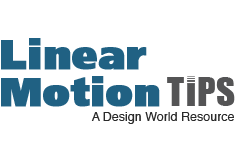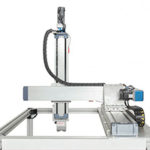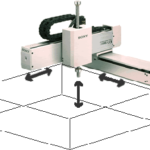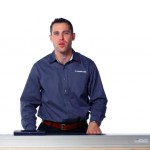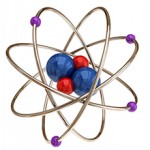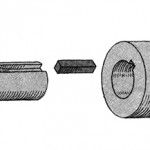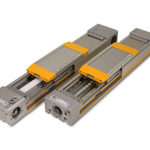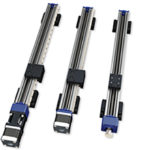Moog Animatics, a division of Moog Inc., has announced the release of three new high-performance models to its actuator product line. These fully integrated actuators bring SmartMotor™ capabilities (ease of use, compactness and speed to market) to today’s actuator applications. They are designed for precise motion, long life and minimal maintenance. Typical applications include material […]
Ball + leadscrew driven
New Thomson Electrak HD Linear Actuators
Thomson Industries, Inc., a leading manufacturer of mechanical motion control solutions, has developed an entirely new platform of electric linear actuators which enable design engineers to convert a wider range of hydraulic applications to electric and substantially improve application control. The new Electrak HD™ electric linear actuator offers a new level of electronic functionality with […]
Things are moving at ATX West 2016: Rollon in Cartesian robots
There are plenty of robot exhibitors at the ATX West tradeshow in Anaheim, Calif., this week, showing off everything from 6-axis robots that nearly reach the exhibit hall ceiling to SCARA robots assembling miniature medical devices. But there’s a new entrant into the robot space this year, and their aim seems to be to make robots—Cartesian robots, specifically—more […]
Tips for selecting pre-engineered Cartesian robots
Cartesian robots operate in two or three axes along the Cartesian coordinate system of X, Y, and Z. While SCARA and 6-axis robots are more widely recognized, Cartesian systems can be found in nearly every industrial application imaginable, from semiconductor manufacturing to woodworking equipment. And it’s no surprise that Cartesians are so widely deployed. They’re […]
New Thomson video shows high-precision performance of its WM ball guided ball-screw-driven units
Thomson Industries Inc., a leading manufacturer of mechanical motion control solutions, has released a new video to introduce the benefits of WM80 ball-guided ball-screw-driven linear units. These linear systems are designed for high thrust, payload, precision and stiffness with force up to 12,000 N and repeatability to 0.005 mm. The WM series is suitable for […]
Linear actuators: Pneumatic or electric?
Updated May 2018 || Electrons or air molecules? That’s not a question you hear very often, but it’s one that engineers and designers wrestle with when developing a new machine or process. That’s because a wide range of linear actuators, especially rod-type versions, are available either electrically driven or pneumatically driven. The choice of which […]
Transmitting torque with keyed shafts
Power transmission between two rotating components requires a secure connection between the shaft of the driving component, and the hub of the mating part. One way to ensure torque transmission without slipping is by using a keyed connection. For most automation applications (motors, gearboxes, pulleys, etc.), a parallel key, also known as a straight key, with […]
Five things to consider in vertical applications
Mounting orientation is one of the core considerations when sizing and selecting a linear actuator. Depending on the type of linear guides used, some actuators can support higher downward or lift-off loads than side loads, or can handle pitch and yaw moments better than roll moments—all important factors when evaluating an actuator for vertical duty. […]
Parker announces North American production of high moment rodless linear actuator series
Now manufactured in the USA, the HMR attains greatly improved lead times and new customization options. Parker’s Electromechanical Automation Division, a leading supplier of motion control technology, is pleased to announce the domestic manufacturing for the complete line of High Moment Rodless (HMR) electromechanical linear actuators. “This move will serve to greatly improve product lead times […]
Micro Precision Linear Actuators
Helix Linear announces its new Micro Precision linear actuators, which are offered in three different configurations to meet a wide array of applications where precision linear motion is required. The three models are the Integrated Precision Actuator (“IPA”) with a lead screw integrated into a stepper motor, the Coupled Precision Linear Actuator (“CPA”) that uses […]
